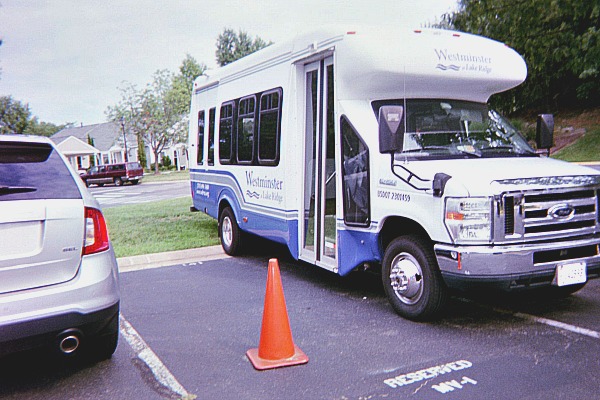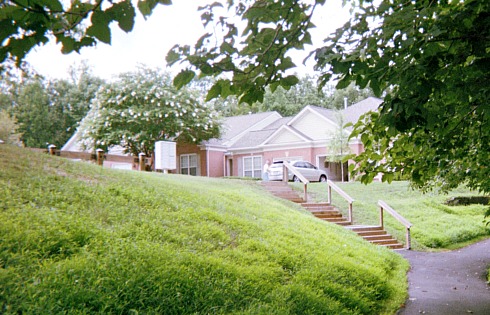Active adult living communities benefit from using mobile phones five ways
Active adult living communities have residents who can learn to use technology to improve the quality of their lives. Each year American society experiences a changing technological landscape with the latest technology innovations appearing in the marketplace.
Although older adults have been slow to embrace new technology, many older adults now view them as essential resources that can enhance the quality of their daily lives. To some of the residents of the active adult living communities, learning the new technology can be intimidating at times. However, once the scared senior overcomes this learning hurdle, the new technology can help them stay connected with their loved ones. It can also help them overcome some of the limitations that come with getting older.
“Today is a great time to be a senior, “says Lynette Ladenburg, chief operating officer and administrator at Tacoma Lutheran Retirement Community in Tacoma, Washington. This organization is breaking ground in using technology to enhance the quality of life for seniors getting older and residing in active adult living communities . “Along with the emotional benefits of aging in place, seniors can save thousands and thousands of dollars if they are able to remain at home,” Ladenburg says. “It’s part of the American Dream: We want to age in our own homes.”
Active adult living communities have residents interested in communicating with friends and families.
Many older adults who are part of active adult living communities use Skype or Facetime to go online to chat with friends and family members. Since this is the top reason that they go online they want to be able to see the people they are talking with. Both Skype and Facetime make the conversations more engaging and meaningful to them. FaceTime is an Apple product designed for iOS devices such as an iPhone or iPad.
 Residents of active living adult communities can use this bus to transport them to the homes of their friends and family for a visit after using their mobile phone to call them.
Residents of active living adult communities can use this bus to transport them to the homes of their friends and family for a visit after using their mobile phone to call them.Seniors can use Skype to connect with a friend without access to a computer or a Skype account. The senior citizen can call the friend’s telephone from a computer and chat the old-fashioned way. Skype-to-Skype audio and 1:1 video calls are free in active adult living communities. Calls to landlines and mobile lines are available through a subscription or pay as you go.
Skype makes it easier for grandparents to interact with their grandchildren by reading to them or face-to-face with video calling. “If you sat down with a young child, you wouldn’t say, “So, tell me about your day,” Bob Stephen, vice president of the Home and Family Portfolio at AARP explains. “You’d start playing with them and having fun. That’s the kind of thing technology allows us to do – even remotely." Grandparents living in active adult living communities won't have to worry about communicating with their loved ones.
Teresa Kakadelas writes in her article about 5 Ways Technology Can Help Older Adults that emails and the Internet were new experiences for her mother. Mrs. Kakadelas had a hard time understanding how to use emails to communicate with her family. Teresa’s sister resolved the problem by purchasing a Presto machine for their mother. Family members were able to send the mother emails without the use of a computer. Mrs. Kakadelas now enjoys receiving communications from her five children and 23 grandchildren.
Medication Reminders.
At times residents living in active adult living communities may be so busy enjoying life that they forget about taking important medications. Medisafe is a pill reminder app for a smartphone or tablet. Active older adults can check their technology device for information about pill schedules, reminders to take the medication and sends alerts to a family member if the senior has missed taking the medications.
 Is this older resident of an active adult living community too busy washing his car to remember to take his medications? Will a mobile phone app help him to remember?
Is this older resident of an active adult living community too busy washing his car to remember to take his medications? Will a mobile phone app help him to remember?The Front Porch Center for Technology, Innovation and Wellbeing is part of Front Porch, a nonprofit organization that operates active adult living communities, retirement living and affordable housing communities in several states. The center deploys emerging technology to help people manage their health while staying active and independent.
The center, formally established in 2009 in Burbank, California, has launched Minding Our Meds: Demonstrating Senior Medication Adherence with Cell Phone Texting Reminders. The project uses cell phone texting to remind older adults to take their medications. “We’re very optimistic that this will fill a unique need,” says Kari Olson, president of the Front Porch Center. “We want to take something older adults already have – a cell phone – and use it to help them stay independent and active.”
Medication nonadherence is a growing problem among older adults. Many older adults living in active adult living communities take multiple medications. The health consequences of nonadherence can have serious repercussions. Medication nonadherence results in 125, 000 deaths each year, according to the American Society on Aging and the American Society of Consultant Pharmacists Foundation.
Maura Conry, a pharmacist and social worker in Kansas, believes that technology such as cell phone texting is helpful to encourage medication adherence. According to her, reminders to take medications are only part of the solution. Other reasons why older adults choose not to take medications include fear of side effects, cost, a belief that the medications won’t work or a lack of understanding of why they need the medications. “The reasons are way more complex than just forgetting,” Conry says.
Sight, Hearing and Other Technology Aids
Senior adults can benefit from assisted living technology that makes it easier for them to see, hear and use computers and mobile devices. Windows 7 provides a Speech Recognition for older adults that helps them issue voice commands to their PC to surf the Web and dictate documents and email. Windows also comes with a basic screen reader called Narrator. Those suffering from hearing lose can listen to the screen reader read on-screen text to them aloud in addition to describing various events including error messages that appear on the screen.
Residents of active adult living communities experience many vision changes. Presbyopia is the most common of these changes. For those diagnosed with this change, it is harder for them to see close objects or small print. Modern technology can help seniors deal with changes to their vision.
High Contrast is a popular feature that highlights the color contrast of some text and images on the computer screen. People with minor or temporary vision problems can more easily identify these items. Magnifier enlarges a full screen or part of the screen, up to 16 times the original size. This makes it easier for people with limited vision to see text and images on a screen.
EyeReader is a mobile phone app that uses the LED light of a smartphone to magnify reading material. This is a solution for older adults who find it hard to read smaller print in dark places. The app can act as a substitute for bifocals. The user can zoom in and out with two fingers. It is available for download at the iTunes store for $1.99.
Big Keyboard is an app for iPhone, Pad and iPod touch screen. It makes the keyboard 40 percent larger with 100 percent more contrast, so the user can easily see the letters as they are typed.
Loss of mobility
Amazon Echo (Alexa) is a wireless speaker that responds to commands and questions. Voice commands operate Alexa to play music, add items to a shopping list and other tasks. Amazon Echo requires Wi-fi to answer questions and provide weather, news and traffic updates. The speaker works with smart home automation devices to turn lights on and off or adjust the thermostat.
Safeguarding money
It seems that American senior adults have been forgotten when it comes to finding digital banking products designed especially to meet their needs. Observers say the financial services industry could overcome the specific challenges related to targeting this segment. If the financial services industry doesn’t reach out to these senior citizens, then they could be missing a major opportunity to build value with these customers. Targeting financial services to only millennials means that the financial services are ignoring another market for its digital products.
“People have been ignoring [seniors] for too long,” said Tom Kamber, an executive director of Older Adults Technology Services, a nonprofit that works with banks and other companies. According to Kamber, the convenience of digital banking is not lost on older Americans; it is largely an issue of access and education. “There is still one more group ready to do it.”
Some banks and fintech are including seniors in their digital products marketing efforts. These ways include adding digital banking entitlements for trusted individuals, such as adult children or guardians. Others are using data to uncover and deal with elder abuse. For some banks, it is as simple as teaching older customers how to use digital tools in the branch.
Older adults are too often victims of financial abuse. Older Americans lose 2.6 billion dollars each year due to financial abuse according to estimates in a MetLife study titled, “Broken Trust Elders, Family & Finances.” Technological innovations are helping to protect individuals who are victims of this type of abuse.
Nomorobo is a free service that helps stop pre-recorded automated calls. It identifies incoming calls from known robocallers and hangs up the call before a person answers the phone. It allows legitimate incoming automated calls, such as doctor appointments, reminders or school closings. Nomorobo blocks telemarketers from reaching older adults with both legitimate sales calls and fraud phone calls. Designed for landlines with most major carriers, it also is available for use on cell phones. There is a charge for the mobile phone version of Nomorobo.
True Link Financials is a reloadable debit card. Senior adults can customize the debit card to meet their needs. It can be set up to allow certain purchases, block online and phone purchases, block specific merchants, set spending limits and alert other family members about charges. The debit card works with Visa debit and has a monthly fee of $10 per month. This card also manages, monitors and limits a caregiver’s spending.








